Lotus Unveils The Evija Fittipaldi, an Ode to One of The Finest Car-Driver Combinations in Formula One History
- 16th Oct 2022
- 1907
- 0

UK, Hethel, 14 October, 2022
The already rare and coveted Lotus Evija hypercar, which is the world's most powerful production car, has now become much more so. Lotus has created the Evija Fittipaldi as a tribute to one of the greatest Formula 1 cars and drivers in history, in an attempt to better the future.
In 1972, young Brazilian racer Emerson Fittipaldi joined Lotus and went on to become a legend of the sport. Driving the now-iconic Lotus Type 72, Fittipaldi won five of the season's eleven races, securing both the Drivers' Championship for himself and the Constructors' Championship for Team Lotus.
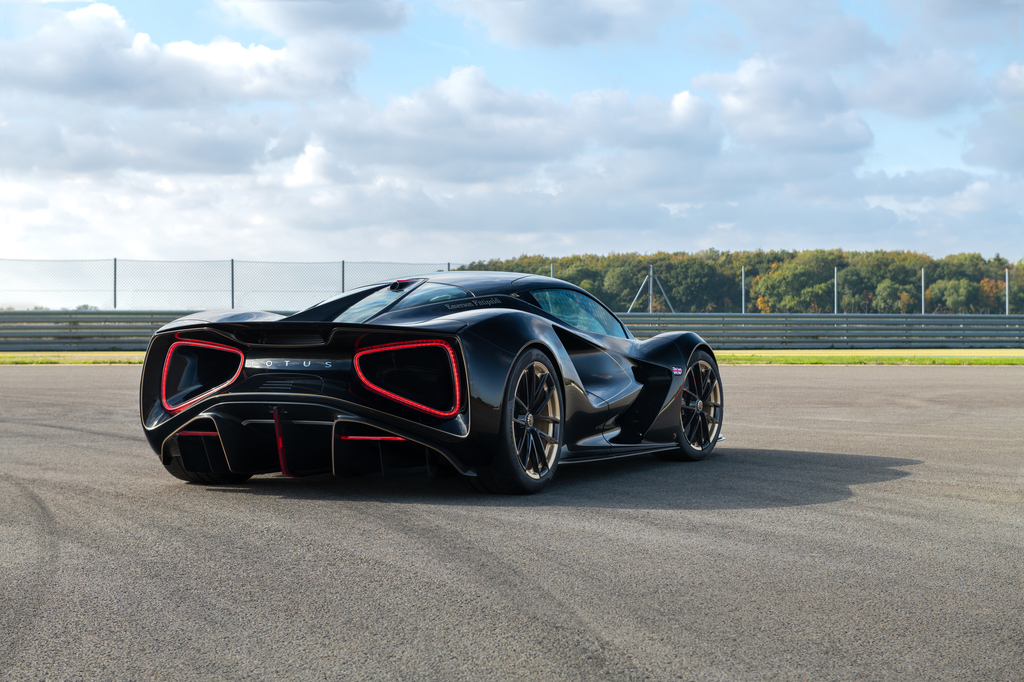
The Lotus Evija Fittipaldi is a fitting way to celebrate this partnership 50 years after it was first formed. All eight of the all-electric two-seaters being hand-assembled at Lotus's global headquarters in Hethel, Norfolk, United Kingdom, have already been purchased. Customers should expect to start receiving their orders somewhere in the first few months of 2019. The project is the latest effort from Lotus Advanced Performance, the company's newest division devoted to bespoke product development.
The hand-painted façade and several other unique design features have been created to celebrate this historic relationship and include the world-famous black and gold colour combination, which will also turn 50 in 2022. A hand-colored plan view of the Type 72 is carved into the exposed carbon fibre of the roof, while Fittipaldi's autograph is hand-stitched into the dashboard.
The rotary dial in the centre of the floating instrument panel is, probably, the most memorable feature. Each Evija Fittipaldi is made by hand from discarded Type 72 aluminium, so you know it's an authentic part of the iconic F1 racer.

To celebrate the introduction of the new vehicle and the renowned Type 72, customers, their families, and other VIP guests had a once-in-a-lifetime experience day at Hethel.
Emerson Fittipaldi, the evening's honoured guest, expressed his delight at returning to Hethel for an occasion of this magnitude by saying, "It's amazing to be back at Hethel. I've enjoyed being a part of this, and it's been great fun to introduce the car to its new owners. Driving the Evija Fittipaldi and my championship-winning Type 72 Formula 1 car around the Hethel test track has been an incredible thrill.
The day was also notable because it was the first time in history that all eight surviving examples of the Type 72 were brought together and driven on the Hethel test track.

Lotus Advanced Performance Director Simon Lane remarked, "The word 'legend' is frequently overused, but this project has brought together the Lotus Evija hypercar, Emerson Fittipaldi, the Type 72 racing car, and our brand's illustrious Formula 1 lineage." The world saw the premiere of a hypercar that could only have been made possible by the combined efforts of these four giants, and it was the type of event that made you want to "pinch yourself."
The production of the Evija has commenced at Hethel, and these eight cars mark a watershed point in our nation's history, he remarked.
The Lotus Evija Fittipaldi's unique features begin with its one-of-a-kind paint job, which features the vehicle's name in gold lettering on the body to the side of the rear windshield. Black and gold 'Type 72' wheels with red on the left and green on the right anodized centre lock surrounds and black and gold brake callipers complete the look.
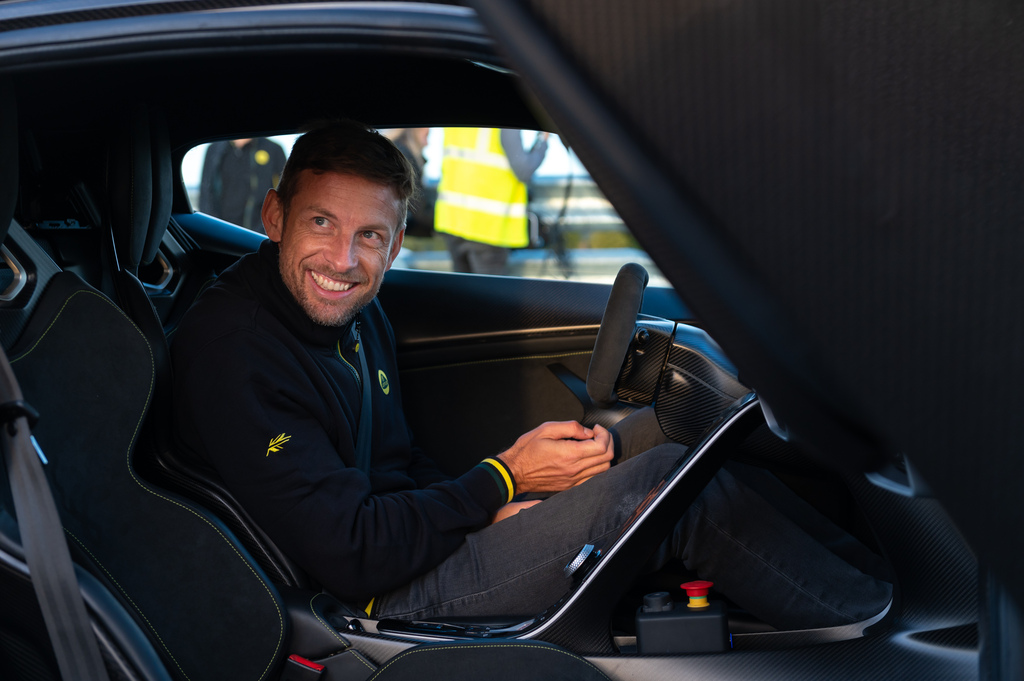
Decals honouring the 1972 victories of the Type 72 can be seen on the active rear wing, and the number 8 can be seen on the B-pillar. When Fittipaldi won the British Grand Prix in 1972, he was racing with that number on his car. The outside styling is completed with a carbon and gold Lotus insignia on the front bumper.
The interior is an embodiment of the concept of luxury and bespoke design. Black leather seats with gold accent stitching, and the dashboard, centre rotary clock, start/stop button, and pedals are all finished in gold. The roof liner is also stitched in a unique pattern.
Classic Team Lotus, a historic racing organisation run by Colin Chapman's family to keep Lotus F1 cars running, has provided substantial funding for the project's development. The launch ceremony's gala dinner was held in this restaurant in Hethel, just across the street from Lotus.
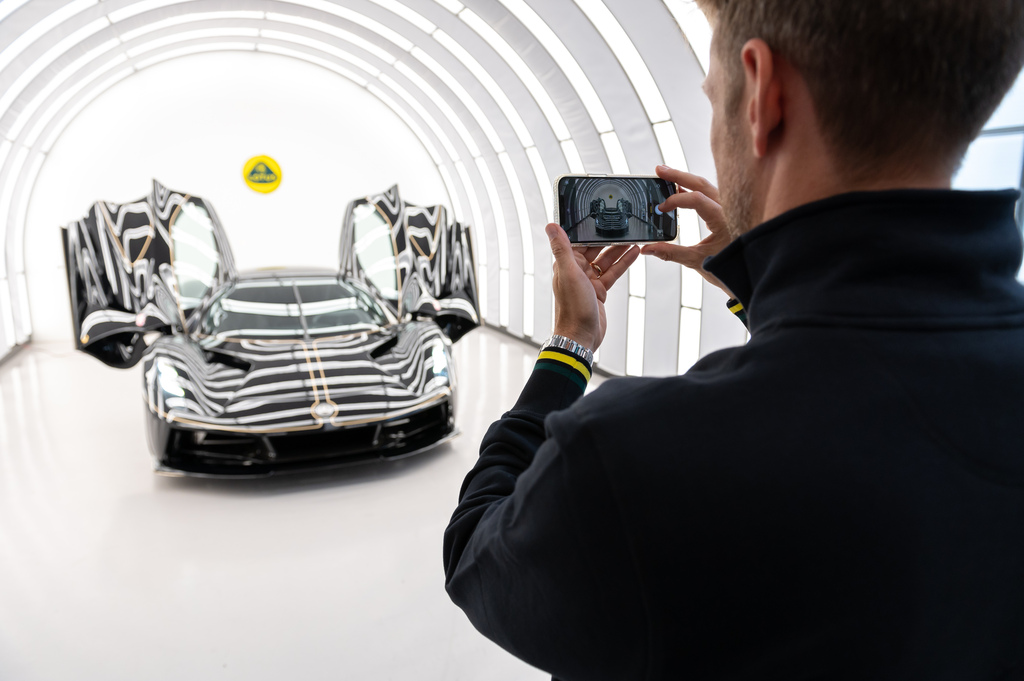
"Emerson Fittipaldi and my father had a very unusual connection, and their extraordinary success was the consequence of an excellent team effort by the determined designers and technicians at Team Lotus," said Clive Chapman, the company's managing director. For Emerson, the Lotus Type 72 is "the finest racing car he ever drove," and every time he is reunited with it, he has an emotional outpouring.
"Need I say more? It's been 50 years since Emerson Fittipaldi won the World Championship, and now we're celebrating by bringing together the Lotus Evija, the Lotus Type 72, the black-and-gold livery, and him."
As with the Emerson Fittipaldi and the Type 72, the Lotus Evija's tremendous power and performance do not overshadow the driver. The Lotus Evija Fittipaldi has over 2,000 horsepower and over 1,700 Newton-meters of torque, making it the most powerful series-produced vehicle in the world. It takes less than three seconds to get from 0 to 100 km/h (0 to 62 mph), and it takes nine seconds to go from 0 to 186 mph (0 to 300 km/h). We can only go as fast as 217 mph (350 km/h). The following table displays all of the detailed technical specifications.
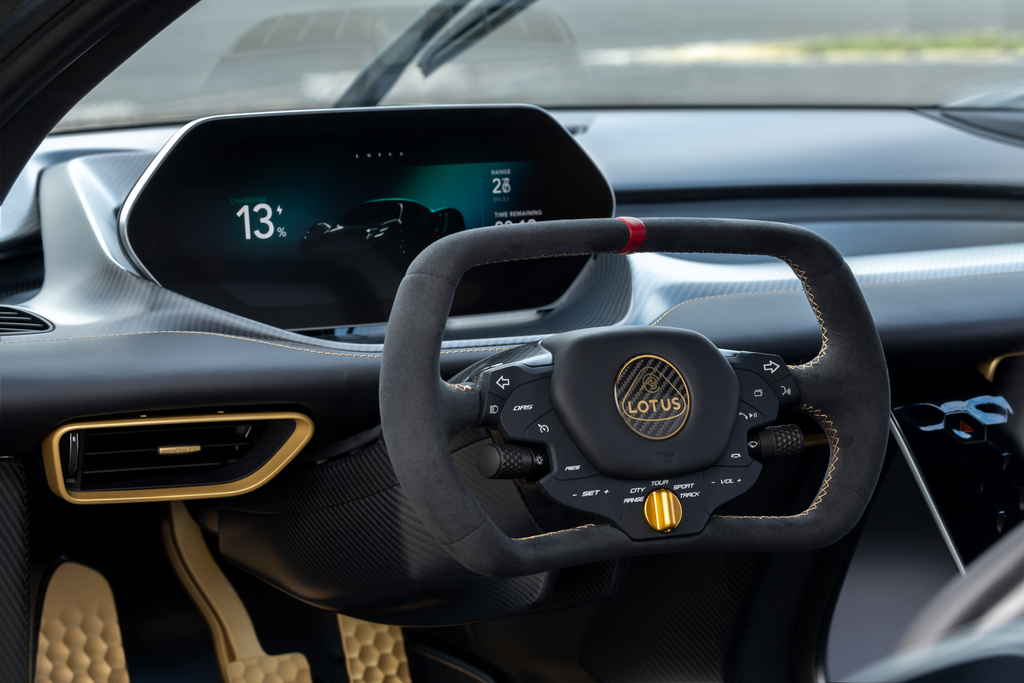
The reigning world champion, Jenson Button, stopped by Lotus earlier this week to test drive the Evija and Emerson's Type 72 on the world-famous Hethel test track. Before the release of the Evija Fittipaldi, Jenson had never seen an Evija in production and had never tested one on the track. Jenson drove the car at high speeds on a 2.2-mile test track to evaluate its ride quality, handling, and performance. He was also seen doing many powerful standing starts. When he got out of the driver's seat of the most powerful production car in the world, people cheered.
Jenson said, "It has the roar of a jet engine." You may think an EV operates quietly, but this is not the case. Massive amounts of torque are being generated. Amazing, right? I found myself grinning broadly at this. It looks like a spaceship and has the agility of a Lotus, but I can tell by the way it handles and the direction it can be steered that it is not. I can't wait to get behind the wheel of a future-looking Evija, the Lotus of today.
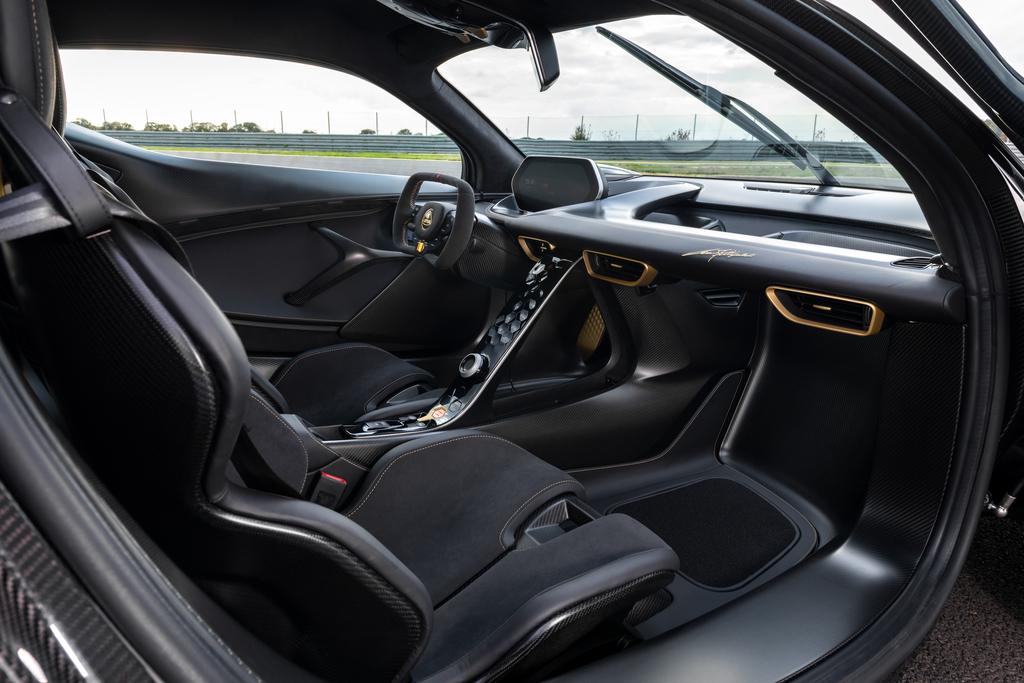
Emerson also let Jenson try on the wheel of his Lotus Type 72 from 1972. Car that Emerson drove earned his first driving title. "It's amazing to be a part of racing history," Jenson Button said. Even though there is not a lot of space, everything is well arranged. Simply putting your feet flat on the ground and bouncing was a breeze. It's a privilege to drive something so extraordinary.
The Evija was designed by a group led by Lotus's director of design, Russell Carr, and it is a stunning example of contemporary automobile design. Its really stunning look is the result of the incorporation of a spectacular Venturi tunnel in each of the rear quarters. This "porosity" maximises downforce while minimising drag by directing air to flow not just over, under, and around the Evija, but also through it. The Evija's state-of-the-art performance is the result of active aero features including a Drag Reduction System (DRS) reminiscent of Formula 1. The Evija was built under the watchful eye of Lotus's renowned Vehicle Attributes Director, Gavan Kershaw.
With its fully adjustable race-style seats and multi-function steering wheel, the interior of the first Lotus road vehicle to use a one-piece carbon fibre monocoque chassis represents the pinnacle of motorsport-inspired road car design and technology.
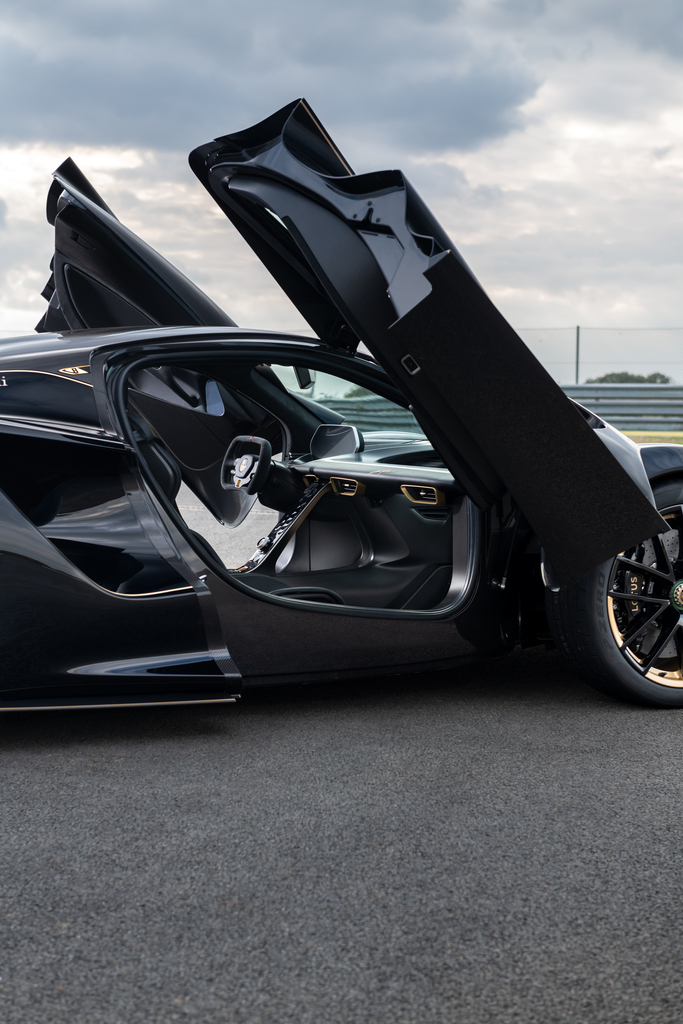
Similar to how the Lotus Evija is bringing about a new era of pure electric speed, the Lotus Type 72 is without a doubt the most successful racing car in the history of Formula One, period. To this day (March 2019), Autosport magazine still considers it the finest F1 car ever built. The Type 72 was the first production racing car to integrate aerodynamics into the structure of the vehicle. It was a game-changer in the studio and on the racetrack. The rear wing and front splitter work together to generate downforce and improve the vehicle's ability to slice through the air.
The Type 72's radiators were moved from the nose to the sidepods, and the air intake was raised up over the driver's head so that cool, unimpeded air could be taken straight into the engine. The improved cooling efficiency, together with the improved weight distribution and performance, is a result of this.
The brakes were situated inboard, rather than on each wheel, with the discs' tips sticking out of the car's skin for better cooling. In a short amount of time, the Type 72's "wedge-on-wheels" design established the industry standard, heavily influencing its competitors.
 Suhas
Suhas


Comments
No comments yet.
Add Your Comment
Thank you, for commenting !!
Your comment is under moderation...
Keep reading luxury post